Will the real Dracula please stand up! I’ve arrived in Braşov, an ancient town in the very heart of Transylvania where nearby Bran Castle is considered ground zero for Bram Stoker’s Castle Dracula.

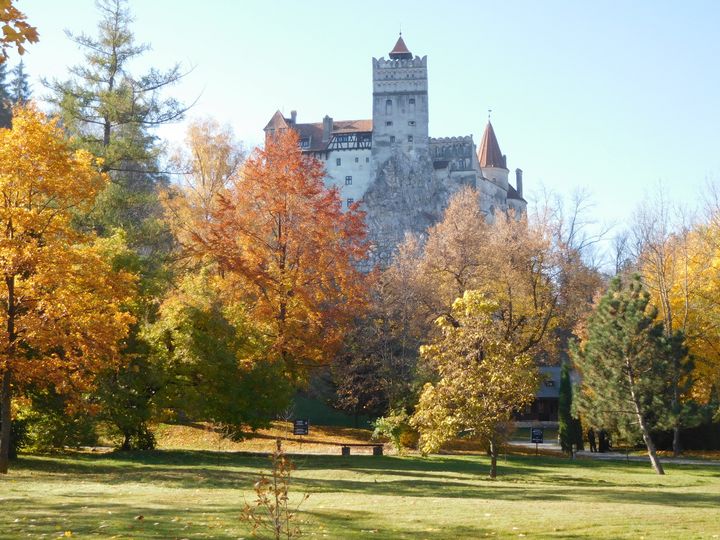
OK, I think we’re all agreed with the experts that Stoker based his un-dead Dracula on Wallachian Prince Vlad III Dracula, known as Vlad Țepeș, the Impaler, who used dragons embroidered on black as his personal insignia - Dracula meaning son of dragon.
Now, Vlad doesn’t seem to have had much contact with Braşov, spending much of his time in Târgovişte, the old Wallachian capital, when he wasn’t wandering around Transylvania in exile or fighting both rebellious Wallachians and invading Turks. But don’t insist on that with the local tourism officials who are not averse to a little business boosting from vampires.
The eight-hour bus journey from Suceava, to the north-east of Bistrița, is splendid, switch-backing up a mountain ravine with huge limestone cliffs and crags into an area where many signs are in both Hungarian and Romanian, living and spoken evidence of the endless mobility of national frontiers over the centuries in Middle Europe.



Despite the scant evidence, my imaginary vampire Geiger counter is already clicking off the charts with vampire vibes.
Braşov, with a truly superb old town centre, began life as Kronstadt in 1211, founded by Teutonic knights and settled by Saxons, fast against a backdrop of soaring crags and mountain spires, much more in tune with Stoker’s descriptions of Castle Dracula than anything you’ll find at the Borgo Pass.



I first passed through the town 56 years ago when it was neither Kronstadt nor Braşov, but delighted in a third name, that of that other murderous vampire - Orașul Stalin, the city of Stalin.
Today it’s very firmly Braşov again, as a huge white sign on a mountain top à la Hollywood sign in Los Angeles, will remind any well-oiled visitor or local who’s forgotten where he/she is.


The old historic centre has its full panoply of ancient steepled churches, towered town hall, ornate town gates, defensive walls with bastions, and pastel-hued mansions from the Middle Ages.


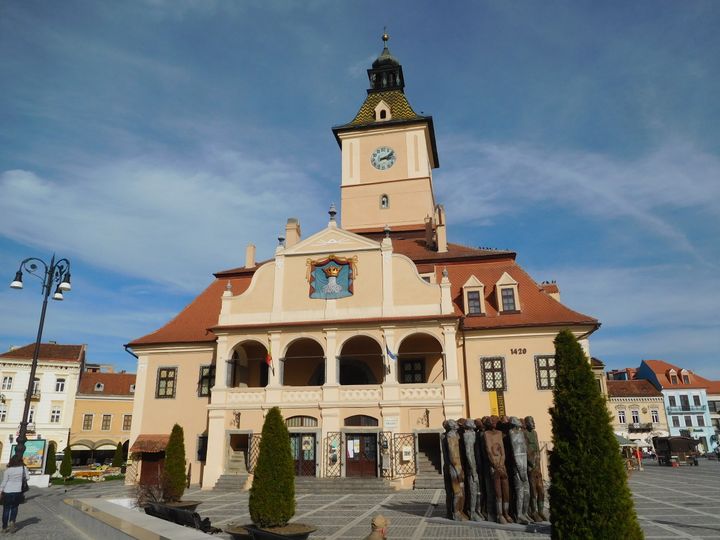
Old town hall
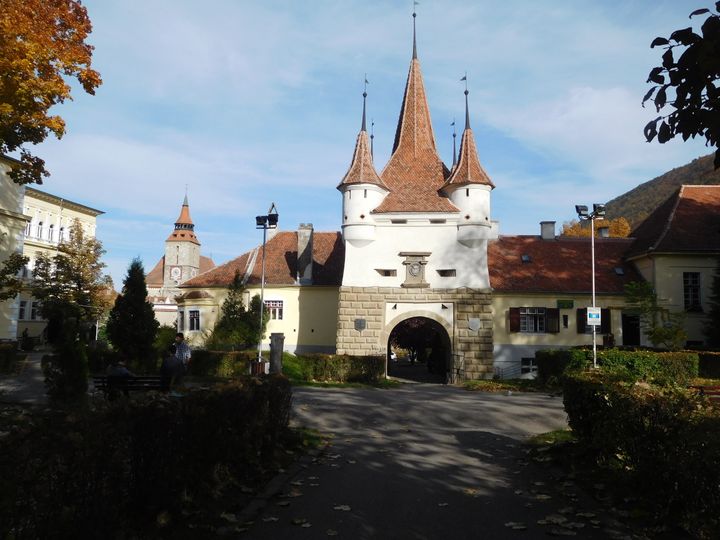
Ekaterina’s gate
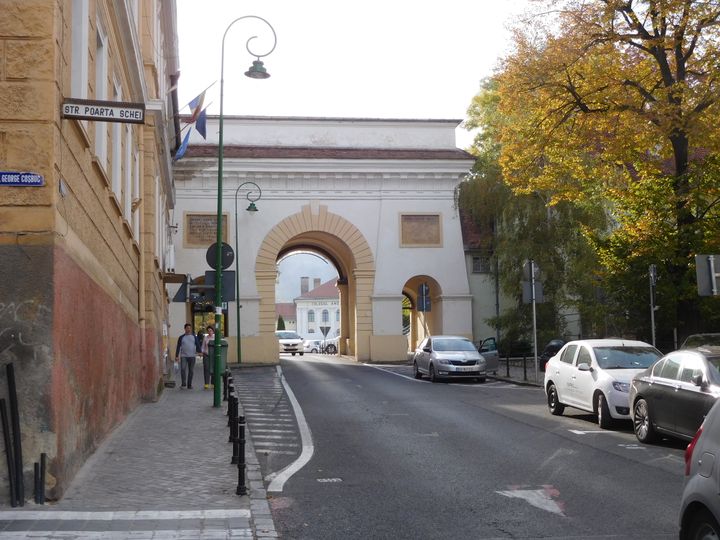
Schei gate

City walls
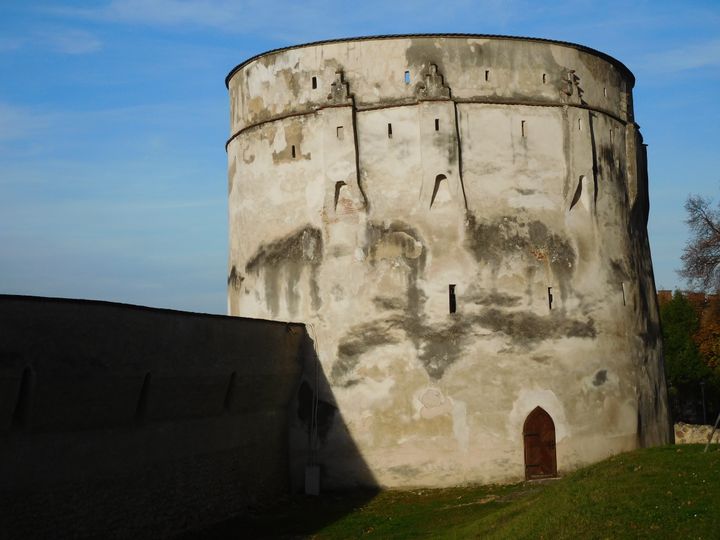
City walls
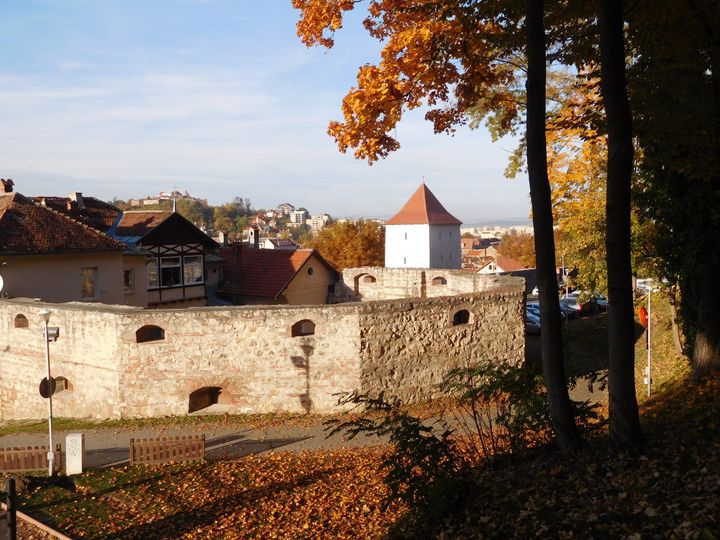
City walls
The lofty 15th century Black Church – it got that name after it was blackened by a fire in 1689 before being restored to a more passable grey – is reputed to be the largest Gothic church between Vienna and Istanbul, and it is here that Yours Truly comes face to face, or rather face to back with Dracula himself.


The St. Catherine’s Church Glee Club from Hamburg, OK let’s be serious, the Kantorei St. Katharinen, is giving a concert in the church this very evening, a cappella interspersed with some Mendelssohn from the organ, and Conductor Andreas Fischer is now looming above us in the organ loft facing his performers and the more massive of the 4,000 organ pipes, with his back to us in the nave.
As he raises his arms and moves them most histrionically, the flaps of his black jacket billow out just like Dracula’s cape. Unfortunately, photos are verboten. Now the flaps have gone really berserk. He looks as if he’s about to take flight. Is the scurvy knave going to bat-swoop down to the nave and use his canines on our virgin throats? Aaaaarggghhh!
After that little bit of hyper-sensory whatevers in the church, I come face to face at last with THE CASTLE.


Bran Castle, some 16 miles southwest of Braşov, is certainly evocative with the red-tiled roofs of its towers and turrets atop stout grey walls, guarding passage through the Carpathians from Transylvania to Wallachia.



Why it was ever chosen as the inspiration for Bram Stoker’s Castle Dracula is far from clear. Its castle is atop a 200-foot rock but that’s only on the far side, and it’s not large. As you approach from the front it’s on a gently rising slope, and although the towering crags of the Carpathian Mountains’ Bucegi range soar up as backdrop, the immediate neighboured is idyllic, peacefully green and leafy.

On top of all that, Vlad the Impaler’s link is tenuous in the extreme. There’s no proof that he ever stayed here though he passed through the gorge on his expeditions against the Saxons. Some say Stoker saw a picture of the castle which thus inspired his descriptions, though others think he was more likely influenced by a visit to a castle nowhere near Transylvania - Slains Castle in Scotland.
Whatever, don’t let any such doubts intrude on marketing. Before you even get to the castle’s great door, tourist traps line a street of attractive traditional houses. A ghoulish voice screeching ‘Dracula, ha, ha!’ wafts from the ‘Haunted Castle.’

Banners line the pathway up to the entrance, displaying impalements, a wolf advertising a restaurant inscribed with ‘hungry as a wolf,’ and Halloween events, such as ‘enjoy an amazing Halloween night in Dracula’s nest’ and ‘Halloween night with Dracula.’




The castle was built by the Saxons round about 1380 and has a plethora of narrow twisting passageways, stone and wooden spiral staircases, and some 60 rooms with exhibitions on matters of history. A couple on Bram Stoker and Dracula display appropriate pictures of Bela Lugosi and other interpreters of the greatest vampire on earth.



One holds the famous picture of Vlad, with his long, pointed nose and sausage-looking moustache beneath his red velvet diadem.

But many of the rooms have been restored as they were when Queen Marie of Romania, granddaughter of Queen Victoria and wife of King Ferdinand, lived here in the 1920s and 30s, and it’s more a museum dedicated to her.




It’s off-season now, but it’s still pretty crowded in the narrow passageways with busloads of tourists from Slovenia, Israel and China among others. It must be utterly unbearable at the height of summer.
As it is, what with people taking freaking idiotic selfies with moronic grins all over the place, and a group of beer-bellied, well-oiled, guffawing Slovenes, I’m ready to do a bit of impaling myself.

Actually, it demanded some expertise to do it right, the idea being to drive the stake with a mallet into the anus and through the body without touching any vital organs so as not to kill the victim. Exiting through the mouth, shoulder or armpit, the stake was then hauled upright and planted in the ground with the victim left for days to die in excruciating torture.
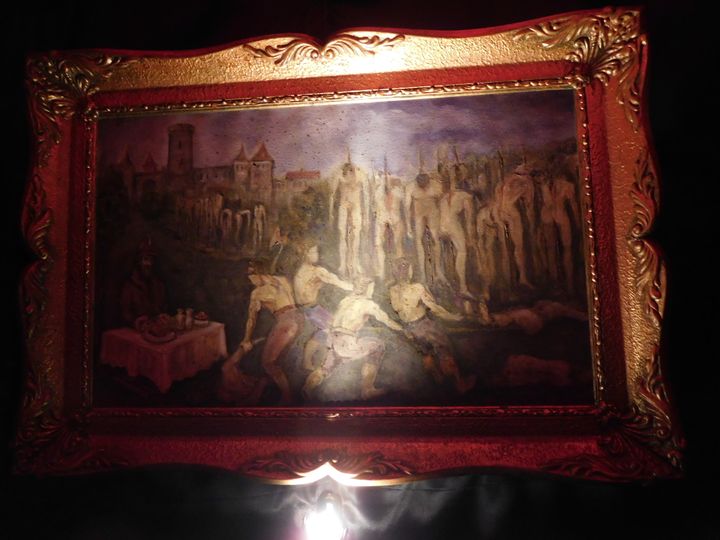
An artist’s impression from Sighișoara

So Vlad and his merry band of impalers must have got a good deal of expertise if they went through (excuse the pun) 100,000 or 200,000 men, women and children, from Turkish invaders to Wallachian Boyar nobles, cripples and beggars.
Note to self: don’t fall foul of Vlad!

[Upcoming blog: A real candidate for Castle Dracula - Vampires on the Looney Front]
By the same author: Swimming With Fidel: The Toils Of An Accidental Journalist. Available on Kindle, with free excerpts at https://www.amazon.com/Swimming-Fidel-Toils-Accidental-Journalist-ebook/dp/B00IMNWV2W and in print version on Amazon in the U.S at https://www.amazon.com/Swimming-Fidel-Toils-Accidental-Journalist/dp/1496080319/ref=tmm_pap_swatch_0?_encoding=UTF8&qid=&sr=
And: Bussing The Amazon: On The Road With The Accidental Journalist; available with free excerpts on Kindle and in print version at https://www.amazon.com/Bussing-Amazon-Road-Accidental-Journalist-ebook/dp/B00KNCGD9M
